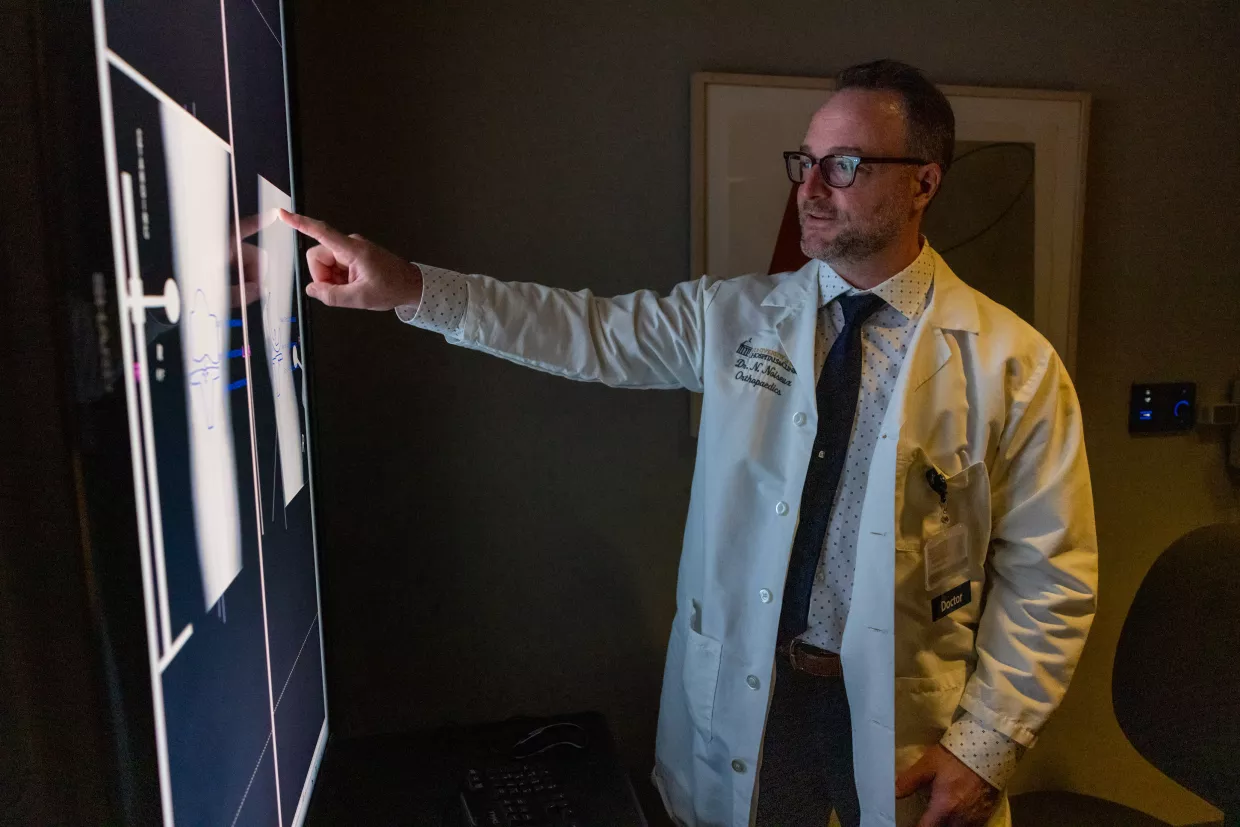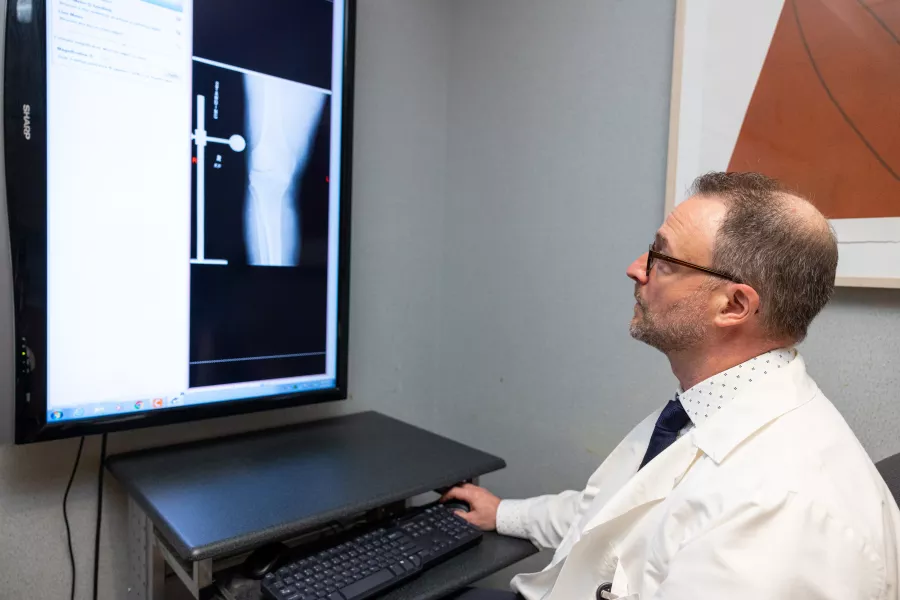The pros and cons of robotic-assisted surgery
Robots can make knee surgeries simpler and more accurate, but they also can mean more work, time, and cost.

Robotic surgery might sound like something from a science fiction movie, but using robots to assist with operations has been around for decades.
Robotic surgery uses tools, such as saws, burs, or cutting blocks, that are attached to a robotic arm and controlled by the surgeon and the robot. The surgeon makes small additional cuts to insert pins into the bone. Attached to these pins are arrays that determine the location of the bones and tissue in space as captured by a camera. The robot processes this information to assist in performing a precise knee or hip replacement.
With robotic-assisted joint replacement surgery, the robot is a guidance system that assists the surgeon in accurately making the bone cuts and placing the implants.
But is robotic-assisted joint replacement better than traditional surgery performed by highly experienced surgeons? In this Q&A, University of Iowa Health Care orthopedic surgeon Nicolas Noiseux, MD, MS, FRCSC, weighs in on how robots can—and cannot—help the surgical process.
Is robotic-assisted joint replacement better than traditional surgery?
I wouldn’t say it’s better. There are pros and cons to robotic-assisted joint replacement, which is most commonly used for total knee replacement. I use robotics when there’s extreme deformity above or below the knee, especially if there’s a prior fracture or growth disturbance.
I also use robotics if there’s hardware in place because of a prior fracture or surgery. If we use conventional instruments, that hardware would be in the way, and we’d have to consider removing it. With robotics, we can leave the hardware in place unless it’s truly in the way of an implant. So, the robot makes the surgery technically simpler for me.
What does the robot actually do in a knee replacement?
A camera captures images of the hip, knee, and ankle, and then the robotic arm guides the saw, bur, or cutting block that has slots for the saw. The robot allows us to be more precise with where the saw cuts happen and where the knee replacement goes. The robot is more accurate and precise at doing what we want it to and having the knee land where we want it to land.

Understand your risk
Evaluate the degree of your knee or hip pain with our health risk assessment.
Are there additional benefits of robotic assistance?
The robot gives me instant feedback on how straight the leg is before the surgery because it sees where the knee is in space. In the future, we’ll get immense amounts of data from the robots about whether robotic knees do better. And the robot is more accurate for the knee-replacement goals we choose.
How do you determine those goals?
We aim for what we call a balanced knee: It’s very stable, it’s straight, it bends well, and it’s not too loose or stiff when it bends. Whether with manual or robotic instruments, a well-balanced knee makes most people happy.
With knee and hip replacement, we do the same surgery every time—that’s what makes us good at it—but we don’t know if where we put knee replacements is 100% correct for every knee with individual variables. The wealth of data from robots will tell us if we’ve been doing knees correctly.
What are the cons of using robots for joint replacement?
A robotic knee is extra work and takes longer in the operating room. Sometimes you need more imaging, like CT scans and MRIs, and that’s more expensive and more things for the patient to go through. Although we’ve been doing knees with robots for 15 to 20 years, we don’t have clear evidence that patients do better with knees put in with robots. We hope we’ll get that data soon. Another big caveat is the rule of “garbage in, garbage out.” If I tell the robot it’s the right knee needing surgery but it’s actually the left knee, it will tell me to do the surgery like it’s a right knee. The robot doesn’t have independent thought.
How do robots compare to surgeons?
Surgeons who have been doing this a long time are as precise or accurate as a robot. We perform consistent surgeries, which makes 85% to 95% of patients very happy. Also, I wouldn’t want our resident physicians in training to leave our program knowing only how to do robotic-assisted knees. Even with robotic-assisted surgery, I want the main computer to be in my head. Knee replacement is both art and science.